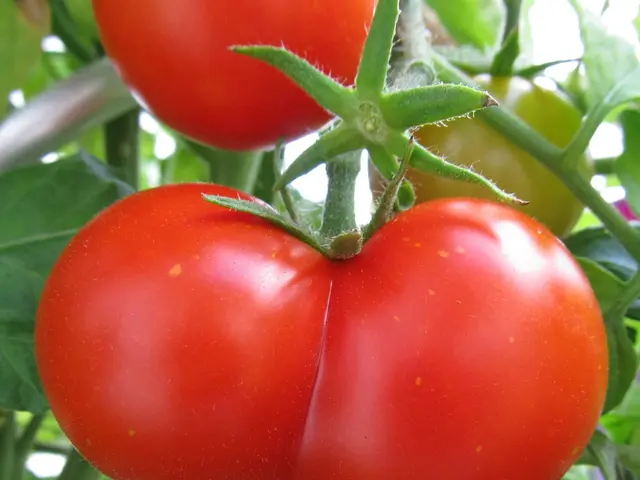Mexican Flavors: Granada
The pomegranate, a fruit steeped in history and symbolism, has travelled a remarkable journey across continents and cultures. Its roots can be traced back to the region spanning modern-day Iran to the northern reaches of the Indian Himalayas, where it was cultivated over 5,000 years ago[1][2][3].
Archaeological evidence from Neolithic to Bronze Age sites across Israel, Egypt, Cyprus, Greece, and Mesopotamia indicates that the pomegranate was not only cultivated but also held a symbolic and luxury status in many ancient cultures[2]. The Babylonians, for instance, believed that eating pomegranates before battle would ensure good luck and courage[4].
The Phoenicians played a significant role in spreading the pomegranate across the Mediterranean. The fruit was carried westwards, reaching Spain during the Moorish rule of Andalusia. Granada, the city that still bears the pomegranate as its emblem, is a testament to this historical connection[1][3].
The Spanish conquistadors brought the pomegranate to the Americas during their voyages in the 16th century, capitalizing on the fruit's durability for long sea voyages[1][4]. In Mexico, the fruit found fertile ground and became a significant part of the culinary tradition. One of its most famous uses is in the dish chiles en nogada, where its seeds symbolize the red in the Mexican flag[1][2][3].
In Mexican gastronomy, the pomegranate has become emblematic. Apart from chiles en nogada, it is almost entirely reserved for this iconic dish, which was invented to commemorate Mexico's independence[5]. Food blogger and influencer María Meléndez from Mexico City shares, "Eating chiles en nogada provides a taste of Persian orchards, Phoenician spice ships, Moorish palaces, Spanish colonial ambition, and Mexican creativity."
The pomegranate is not just a culinary delight. It is also rich in nutrients, outperforming green tea in antioxidant content[6]. Its seeds contain polyphenols, tannins, vitamins C and K, folate, potassium, fiber, and antioxidants. Recent studies suggest that pomegranates may help prevent certain cancers, improve cardiovascular health, lower blood pressure, boost cognitive function, aid in the prevention of Alzheimer's, strengthen the immune system, and serve as an anti-inflammatory agent, particularly for those with arthritis[7].
As we savour the taste of a pomegranate, we are reminded of its vertical slice of world history in each seed. From the ancient Near East to the Mediterranean, Iberia, the New World, and finally, Mexico, the pomegranate's journey illustrates a path of cultural diffusion crossing continents and empires, culminating in its celebrated role in Mexican culinary heritage[1][2][3].
The pomegranate is in season from August to October[8]. As you bite into its juicy, ruby-red seeds, you're not just enjoying a delicious fruit, but also a piece of history that spans millennia.
References:
- History of Food
- Pomegranate History
- Pomegranate: A Cultural History
- The Phoenicians and the Pomegranate
- Chiles en Nogada
- Pomegranates Outperform Green Tea in Antioxidant Content
- Health Benefits of Pomegranates
- Pomegranate Season
- The remarkable journey of the pomegranate, a symbol-rich food, has traversed various global-cuisines and home-and-garden landscapes, spanning from the ancient Near East to modern-day North America.
- In contrast to its nutritious stature, outperforming green tea in antioxidant content, the pomegranate is famously used in the Mexican lifestyle staple, chiles en nogada, showcasing a culinary blend of Persian, Phoenician, Moorish, Spanish, and Mexican culture.
- The pomegranate's history is not limited to food-and-drink, however. Its seeds are packed with health-giving properties, potentially helping prevent certain cancers, improving cardiovascular health, and promoting cognitive function.
- As you consume this piece of historical food, bite by bite, you're not only relishing its delightful flavor, but also experiencing a piece of culture and lifestyle that has thrived across continents and civilizations over thousands of years.
- Whether you're a food enthusiast, culture connoisseur, or lifestyle aficionado, the pomegranate provides a captivating tale of travel and tradition, interwoven with the narrative of global-cuisines and home-and-garden horticulture.
- Each seed of the pomegranate, be it in chiles en nogada or enjoyed raw, serves as a tangible remnant of a historical odyssey that spans centuries, empires, and cultures.




